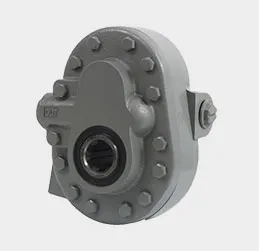Exploring Techniques and Benefits of Sand Casting in Manufacturing Processes
Sand Casting A Comprehensive Overview
Sand casting, also known as sand mold casting, is a versatile and widely used manufacturing process that has been utilized for centuries. It is particularly valued for its ability to produce complex shapes and geometries with a variety of materials, most commonly metals. This article delves into the fundamentals of sand casting, its advantages and disadvantages, the overall process, and its various applications.
The Basics of Sand Casting
At its core, sand casting involves creating a mold from sand, which is then filled with molten material to form a desired object. The mold consists of two halves, typically referred to as the cope (top half) and the drag (bottom half). The sand used in this process is mixed with binding agents to enhance its strength and stability, allowing it to retain the shape of the mold once the pattern is removed.
The first step in the sand casting process is to create a pattern, which is an exact replica of the object to be cast. This pattern can be made from various materials, including wood, metal, or plastic, and it is often designed to be slightly larger than the final product to account for material shrinkage during cooling.
The Sand Casting Process
Once the pattern is prepared, the sand mixture is packed around it to form the mold. The following steps outline the typical sand casting process
1. Pattern Making Design and create a pattern that mirrors the final product. 2. Mold Preparation Mix sand with a binding agent and pack it around the pattern in two halves (cope and drag). 3. Pattern Removal Carefully remove the pattern from the mold, leaving a hollow cavity that represents the shape of the desired object. 4. Core Making (if necessary) For creating internal features, cores made from sand can be inserted into the mold. 5. Pouring Molten metal is poured into the mold through a gating system, which allows the liquid material to fill the cavity. 6. Cooling The molten metal is allowed to cool and solidify, taking the shape of the mold. 7. Mold Removal Once cooled, the mold is broken away to reveal the final cast object. 8. Finishing The cast object may require additional finishing processes, such as grinding, polishing, or machining, to achieve the desired surface quality.
Advantages of Sand Casting
sand casting

Sand casting offers several benefits, making it a preferred choice in various industries
- Cost-Effective The materials used in sand casting are relatively inexpensive, and the process can be performed with minimal initial investment in equipment. - Flexibility Sand casting can accommodate a wide range of materials, including ferrous and non-ferrous metals, allowing it to be used in numerous applications. - Complex Shapes The process can produce intricate geometries and designs that would be challenging to achieve with other casting methods. - Large Parts Sand casting can manufacture large components, making it suitable for industries such as automotive, aerospace, and heavy machinery.
Disadvantages of Sand Casting
While sand casting has numerous advantages, it also presents some limitations
- Surface Finish Compared to other casting methods, sand casting may yield rougher surface finishes, necessitating additional finishing steps. - Dimensional Tolerances The process can result in larger tolerances, which may not meet the requirements for highly precision-critical components. - Labor-Intensive Depending on the complexity of the mold and the finishing process, sand casting can be labor-intensive, leading to longer production times.
Applications of Sand Casting
Sand casting is used across a wide array of industries, including
- Automotive Manufacturing engine blocks, transmission cases, and various other components. - Aerospace Producing parts with complex shapes and lightweight properties. - Art Creating sculptures and decorative items.
In summary, sand casting remains a fundamental and widely used method in the manufacturing sector, appreciated for its ability to create complex shapes at a reasonable cost. As technology continues to evolve, so too will the techniques and materials used in sand casting, promising a vibrant future for this age-old process.
-
Custom Steel Sand Casting Services Precision & Durability GuaranteedNewsApr.29,2025
-
Arise Precision Casting Custom Metal Casting Solutions & ServicesNewsApr.29,2025
-
Sand Casting Guide Definition, Process & High-Quality Sand SuppliesNewsApr.28,2025
-
Premium Alloy Die Casting Manufacturer Aluminium & Zinc SolutionsNewsApr.28,2025
-
Precision Aluminum Die Casting Custom Solutions & Fast TurnaroundNewsApr.27,2025
-
Precision Complex Sand Casting Solutions Durable & Custom DesignsNewsApr.27,2025















